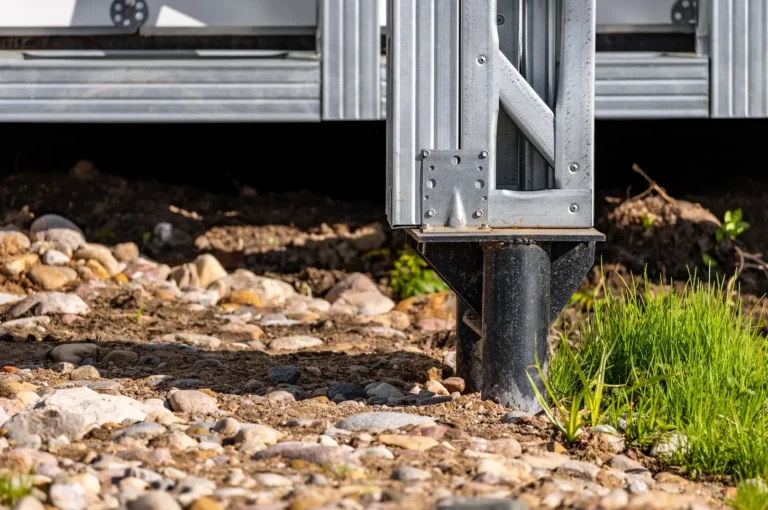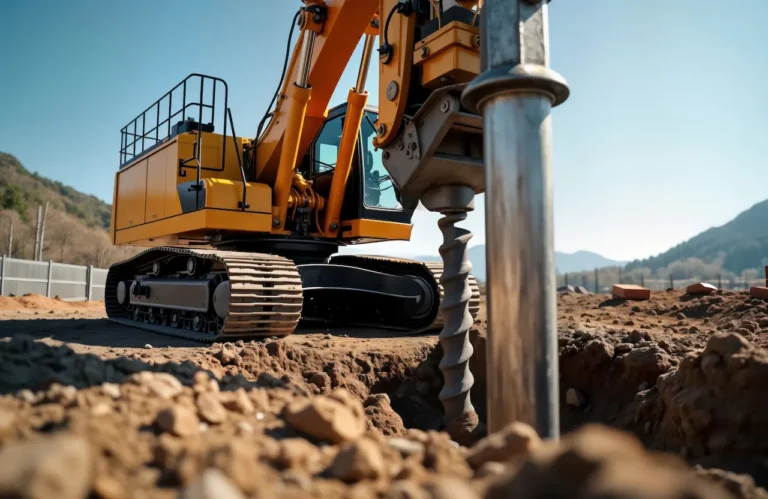Before building a deck, a shed, a house extension, a full house or a commercial building, you need to make one key decision. What type of foundation to use? Across Canada, most homeowners end up weighing two options: screw piles or concrete foundations.
Each has its advantages and disadvantages, and the right choice depends on the type of project, soil composition, budget and timeline.
To help you figure out which one is best for your project, you must start by understanding what are screw piles versus concrete foundations.
- In this article, we walk you through the characteristics, key differences, pros and cons of each method, and real-life factors that should guide your choice.
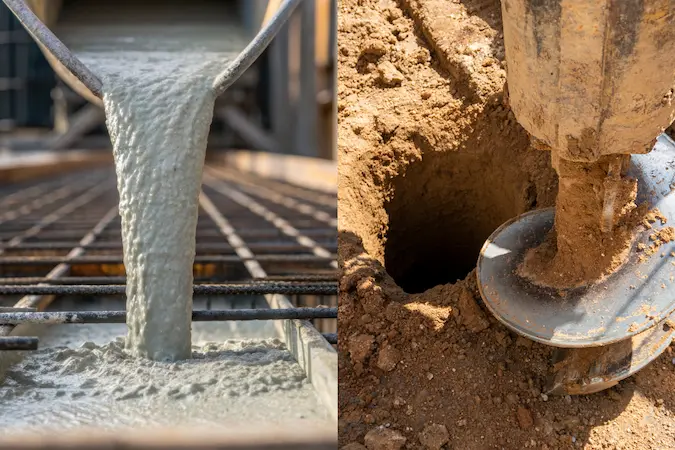
What are screw piles?
Screw piles, also known as helical piles, are a type of deep foundation system that’s installed by literally screwing them into the ground. Think of them as giant metal screws with helical blades at the bottom, designed to anchor your structure firmly into the soil.
Made of galvanized steel, they are installed quickly with specialized hydraulic machinery. Because they twist deep into stable soil layers, they provide excellent load-bearing support and are especially great for uneven or unstable ground.
What makes screw piles stand out?
- Often ready to use in just a few hours or at most a few days for a bigger project.
- Summer, fall, winter, spring, the installation can be performed year-round.
- Since no digging is required, they cause minimal disruption to your yard.
- Removable and reusable, it’s an eco-friendly option in many cases.
The screw piles are a modern alternative to traditional concrete foundations.
What are concrete foundations?
Concrete foundations are the classic choice, the kind of base most people picture when they think of construction. It’s a big pour of concrete, shaped with wooden forms, that hardens into a solid, permanent base for your project. Concrete has been trusted for generations to hold things up.
There are different types depending on what you’re building, but the main idea is the same. It involves digging, pouring, waiting for it to cure, and ending up with a base that’s built to last.
What is the upside?
- It’s incredibly strong and can handle heavy structures with ease.
What is the downside?
- It takes time, equipment, good weather, and it causes more disruption.
- It's not something you can easily tackle at the last minute or in the middle of winter.
If you are looking for long-term strength and you’re not in a rush, concrete might be a good bet.
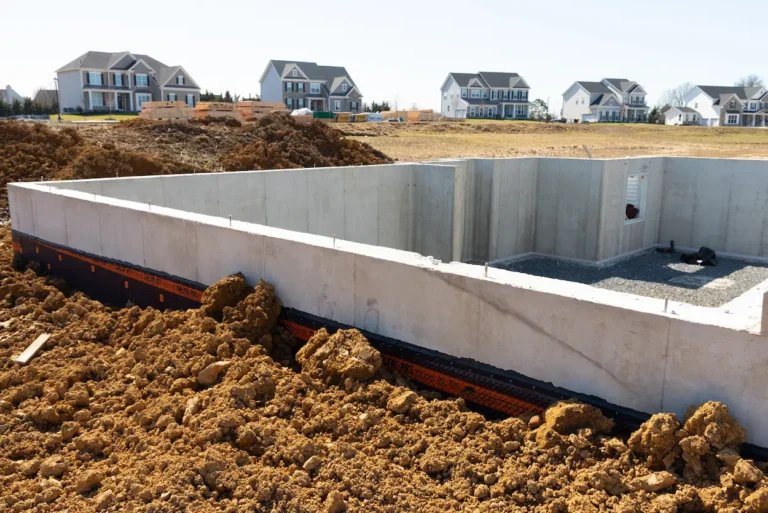
Screw piles vs concrete foundations - Advantages and Disadvantages
Now that you are more familiar with what screw piles and concrete foundations are, let’s dive into the pros and cons.
To help you weigh your options, here’s a simple breakdown of each type of foundation:
Screw piles
Advantages
- Very fast installation
- Can be installed 12 months a year
- You can build right away
- Minimal digging and mess
- Eco-friendly system
Disadvantages
- Requires specialized machinery and installers
- Not always perfectly suitable for every soil
- Tend to be more expensive for small, simple projects
Concrete foundations
Advantages
- Great for heavy loads
- Long-lasting with little maintenance
- Works well in most soil types
- Often required by building codes for large structures
Disadvantages
- Takes time to pour and cure properly
- Weather-dependent
- Requires excavation and heavy equipment
- More disruptive to your yard or landscaping
Types of application - Screw piles vs concrete foundations
Still unsure which option fits your project? Sometimes, the best way to decide is to look at how each type of foundation is commonly used. Screw piles and concrete foundations don’t compete so much as they each shine in different situations.
Screw piles are perfect when you want speed, flexibility, and minimal disruption, like for outdoor projects or seasonal work. Concrete, on the other hand, is better for big, heavy, long-term builds that require serious support.
Here’s a quick overview:
Screw piles applications
- Decks, patios
- Docks, boathouses
- Backyard sheds
- Fences, pergolas
- Tiny homes, small cabins
- Temporary or seasonal structures
- House extensions, sunrooms
- Homes, cottages
- Commercial or industrial buildings
Concrete foundations applications
- Houses, cottages
- Garages, sheds
- Full basements
- Commercial or industrial buildings
- Projects requiring slab-on-grade or full perimeter footings
Of course, that’s not all. Both types of foundations can be adapted to many other projects.

What are the key differences between screw piles vs concrete foundations?
At first, screw piles and concrete foundations might seem like two ways to achieve the same result. But when you dig a little deeper, the differences become pretty clear.
So if you’re torn between the two options and are interested in learning more about what sets them apart, this side-by-side breakdown will help you see the big picture.
Key differences comparison
Key differences | Screw piles | Concrete foundations |
Strength | Strong enough for most residential/light commercial projects | Extremely strong, best for heavy and large-scale structures |
Installation speed | Very fast, often complete in a few hours | Slower, requires several days (including curing time) |
Site disruption | Minimal, no large excavation or mess | High, requires digging, forming, and potential yard damage |
Weather conditions | Can be installed in any kind of weather | Weather-dependent, delays may occur in cold or wet seasons |
Lifespan (durability) | 75+ years with proper installation and corrosion protection | 80-100+ years if well-built and maintained |
Maintenance | Virtually none if installed correctly | Minimal, but may develop cracks or shif over time |
Upfront price | Often slightly more expensive | Usually lower in materials, but more labor-intensive |
Long-term savings | Save time and costs over the years | Costs may increase with maintenance |
From installation time and weather flexibility to long-term costs and maintenance, each option has its own strengths and compromises.
Why do people sometimes combine screw piles and concrete?
Is a mix of both systems the optimal foundation strategy? It might surprise you, but it could be. Many builders and homeowners don’t just pick one or the other, they combine screw piles and concrete to get the best of both worlds.
Why? Because each system brings something unique to the table, and together, they can create a foundation that’s even more reliable.
- A more solid and secure foundation overall
- More freedom to adapt to different building layouts
- Less shifting or settling over time
- Fast pile installation with minimal delays
- Fewer issues to fix in the long run
- Built to last for decades
For many projects, mixing the two can be a smart and strategic choice.
How to decide between screw piles and concrete foundations?
So what is the final verdict, screw piles or concrete? The truth is, there’s no universal answer. It really comes down to your project, your priorities, and the conditions on your site.
That said, the list of advantages that screw piles bring to the table is hard to ignore and undeniable: fast installation, minimal mess, year-round flexibility, and impressive durability. That’s why, for many projects, screw piles have become the preferred choice. They make building faster, simpler, and more cost-effective in the long run.
Of course, concrete still has its place. But if you’re looking for efficiency and versatility, screw piles are definitely worth considering, and for many, they’re the smarter modern foundation.
Are you still unsure? Your best bet is to speak with a local expert who can evaluate your site and recommend the right option.
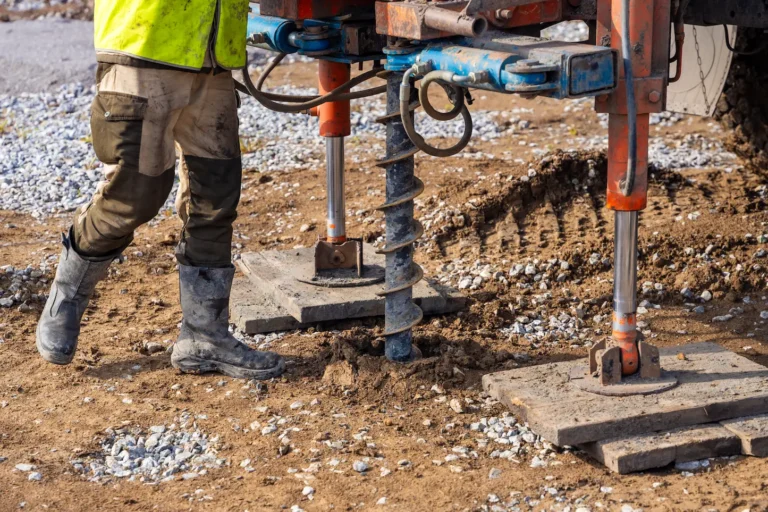
Our partners are ready to provide you with the best screw piles foundation solution!
No matter what your project is, if you are leaning toward using screw piles for your foundation, why not make the next step easy? Our experienced local partners are ready to guide you through the process and offer you the best solution for your needs at a competitive price.
- Just fill out our form to get started. It’s quick, free, and there’s absolutely no obligation.
Shortly after we receive your form, our team will connect you with certified professionals who know your region and are committed to doing the job right.
Ready to build?


